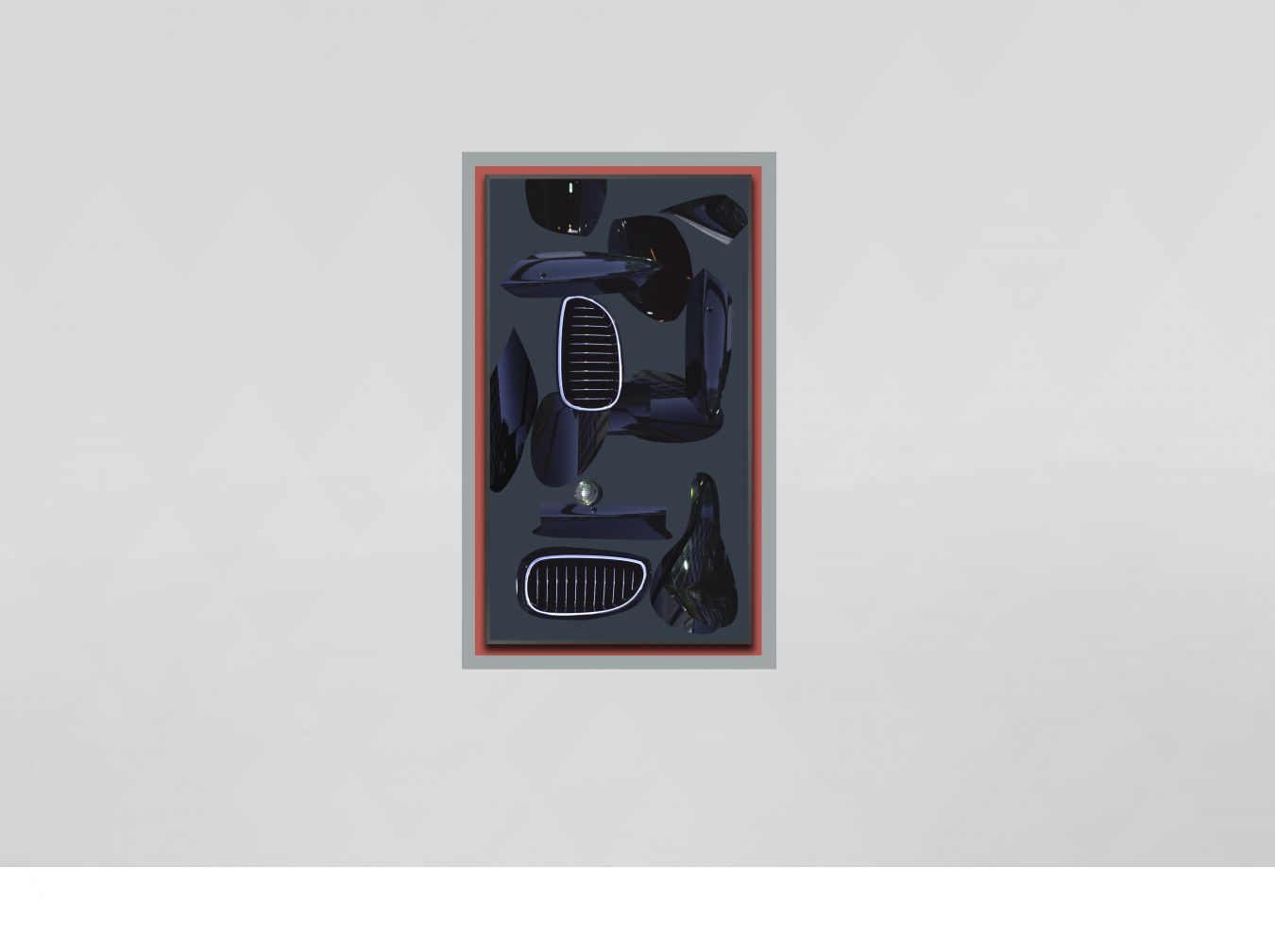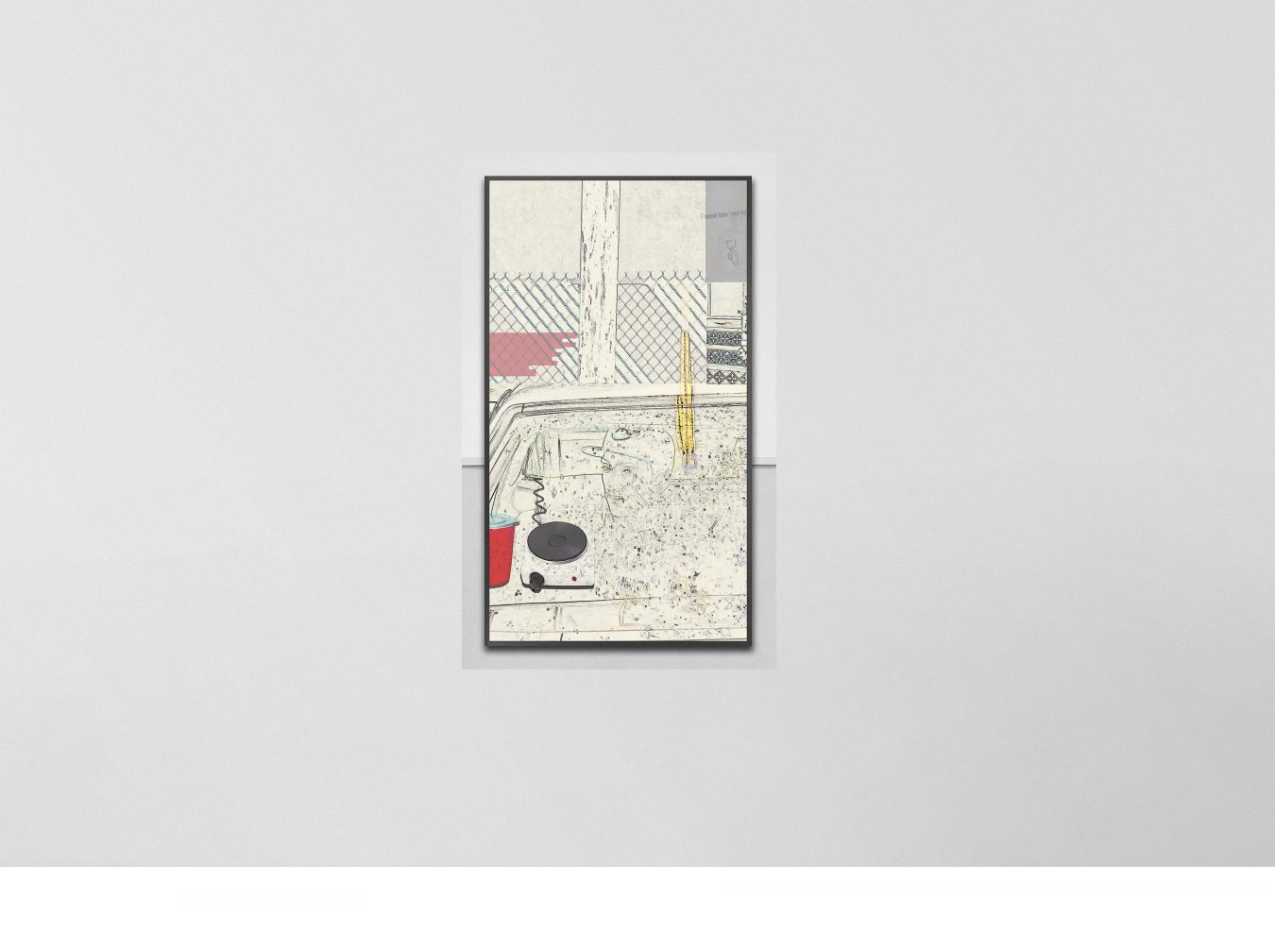Naively, Owen Kydd’s works could be described as GIFs. But while Graphic Interchange Formats have been adopted to be widely circulated, and to in some instances substitute human reactions or language, Kydd’s photographs contain highly specific, pragmatic sentences. His composite pieces, many using pigmented prints laid behind video screens, are layered, complex musings on time and space.
Producing what is coined as “durational photography,” the Calgary-born, Los Angeles-based artist works in between a variety of media. Decidedly not cinema nor photography, Kydd’s pieces have negated technological shifts towards net art or glitch work, even as the technology he uses splits in disparate directions. The artist, who was a finalist of the coveted AIMIA AGO Photography Prize in 2015, has work in international collections such as the Los Angeles County Museum of Art, The Metropolitan Museum of Art, the Hammer Museum, and the San Francisco Museum of Modern Art, and was Jeff Wall’s assistant for four years in Vancouver before relocating to the University of California, Los Angeles to pursue a master of fine arts. Partly born from Vancouver’s photo conceptualism, Kydd’s oeuvre questions the validity and authenticity of the photograph, while at the same time acknowledging our almost instinctual attraction to an image.
“I started off as a filmmaker, making films where not a lot happened,” Kydd says over the phone from LA. “I was in film school at the time and my film profs were generous enough to kind of push me down the hall to the art department.” Kydd earned a fine arts degree from Simon Fraser University and shortly after began working as a studio assistant to Wall. During this time, Kydd began incorporating some of the technological advances such as Mac Minis that could help facilitate a move away from narratively prescriptive cinema, while also avoiding the social and political boundaries present in video art. “I was looking at video art, but I was also trying to work around and reject those parameters as well,” he explains, “and I was looking for a new space for moving images.”
At the crux of Kydd’s early practice, and what became much of what the artist expands on in his later work, is the experience of seeing—and of photographic recognition or recall. “I think we all have that moment, or moments like it throughout the day, where something looks like a photograph or a picture perhaps,” Kydd says. “Now, we have these things in our pockets that we can use to capture [those moments]. We’re kind of performing that motion that I was thinking about in 2004, 2005.” Those images, which so often remain discarded in the backlogs of our mobile phone cameras (or, let’s be honest, our Instagram Stories), that somehow feel imperative to capture, are presented by Kydd on his screens in flickers of receded acknowledgement.
In creating durational photographs, Kydd is also engaging with a sense of time and place within viewing. The images, which are on a loop (the glitch of restarting is either imagined or real, it’s unclear to the audience), make clear a denotation of time experienced with them. In his recent creations, it is almost impossible to separate the act of capturing an image with a camera, but for Kydd that adds another compelling element to the work. “It’s become a bit more of a ubiquitous action but as a result, even though we sped up in terms of our relationships and in terms of communication,” he explains. “I think the camera in our pocket still allows us to slow down, which I find kind of interesting.”
With this, Kydd’s body of work now meets the quickly formatted and disseminated GIFs of the internet. “Ah-ha, yes,” Kydd proclaims, excitable. “I am convinced, well it’s also part of my practice, that the melding of the two is important. Even though you have this potential for quickness or layering the approximation of the real flow of time, it still allows for an access point within the work because the viewer can kind of put themselves within the same time signature.” Addressing these disruptions of time and movement, Kydd’s recent exhibition at Vancouver’s Monte Clark Gallery as part of April 2018’s Capture Photography Festival brought in various media—durational photography shown with computer-based layers and animations as well as prints presented as wall murals.
In the layering of his art, of photographic tropes and imagery, Kydd presents images that we associate with the web, while avoiding designating images strictly to the digital realm. Even though images are captured and displayed digitally, the entrance to them is on a durational plane, beyond the physical or the visual. “There is this kind of uncanny moment where you can feel like you are experiencing the same time as the work,” explains Kydd. This valley applies to even the temporal experience, creating yet another dimension to something that, at first glance, appears much simpler than it actually is.
Read more in Arts.











